Ivory in Cutlery: Tradition, Innovation, and Conservation
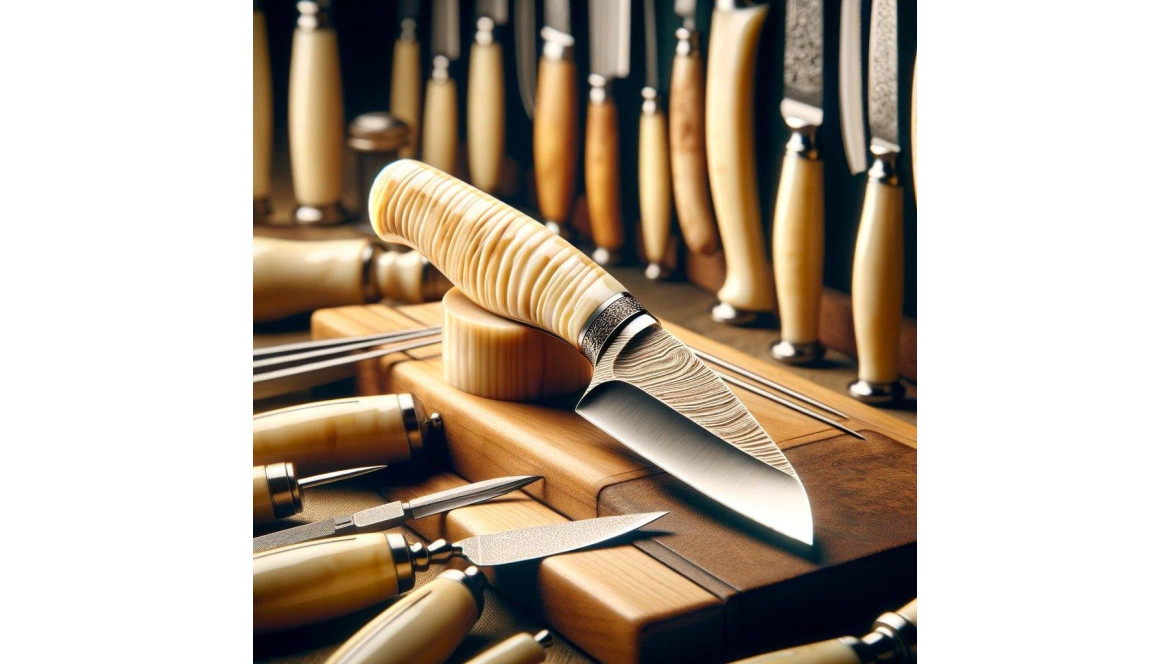
Ivory, a material prized for its beauty and rarity, has long symbolised luxury and social status through its use in various art and craft objects, notably in the cutlery industry, where it is appreciated for its smooth texture and elegant appearance.
Ivory has long been associated with the finesse and richness of art and craft objects, including knife handles. This noble material, known for its smooth texture and elegant appearance, has transcended ages, symbolizing both luxury and beauty. But what exactly is ivory? Where does it come from, and how is it used in the art of cutlery? In this article, we will explore not only ivory in its natural forms but also sustainable alternatives that capture its beauty without compromising environmental and animal ethics.
What is ivory ?
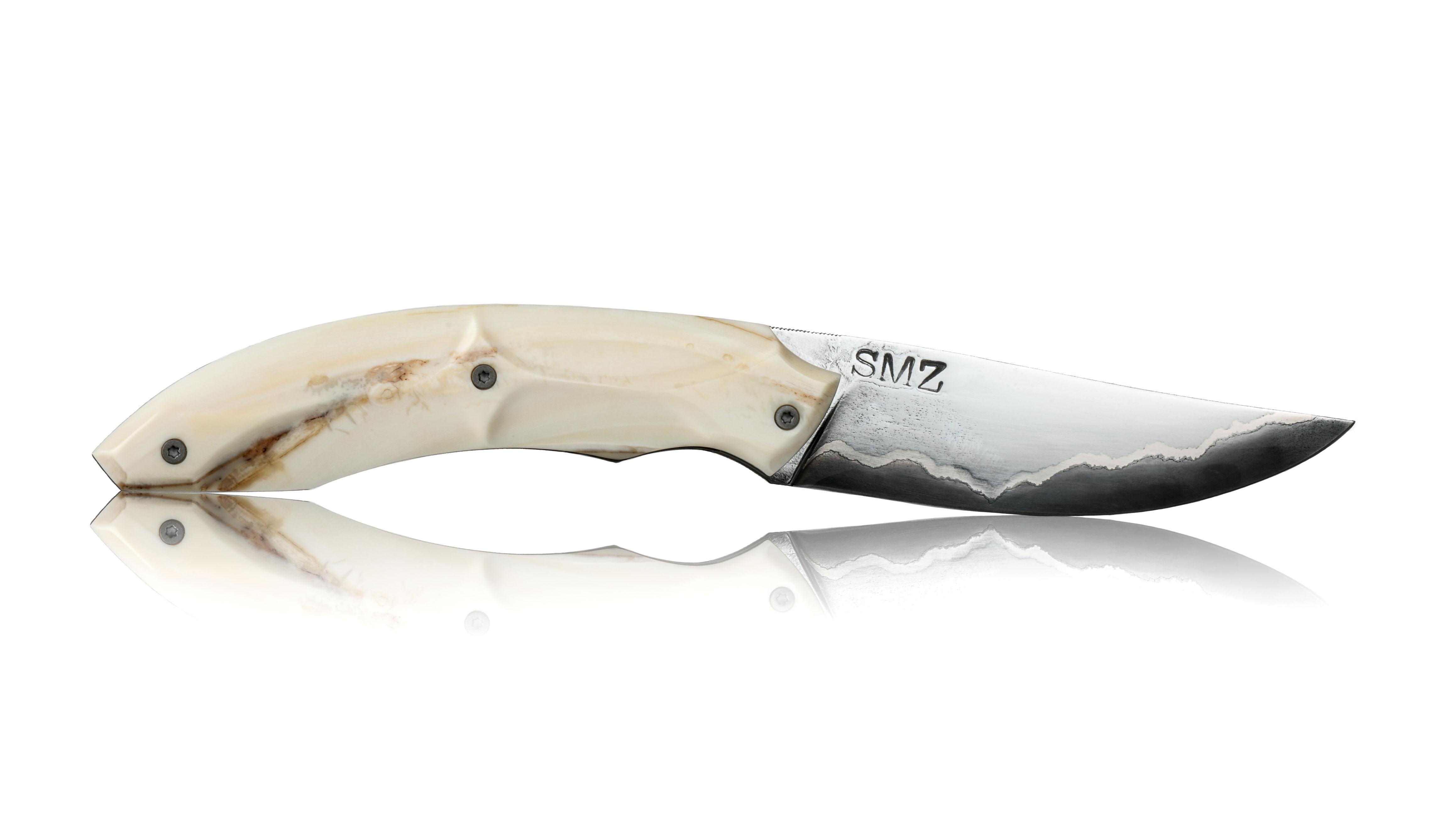
SMZ Flamme de forge
Ivory is a hard, white, opaque substance primarily composed of the dentine of the teeth and tusks of certain mammals such as elephants, hippopotamuses, walruses, narwhals, sperm whales, or warthogs. In France, the term "ivoire" is often used to specifically refer to elephant or mammoth ivory. Historically, ivory has been carved and used to create various practical and artistic objects, particularly before the introduction of plastics. Elephant ivory, in particular, lacks enamel and its structure can be compared to that of wood, with visible concentric circles on a cross-section of the tusk, allowing deduction of the animal's age.
Ivory is considered precious in many cultures due to its rarity, beauty, and historical association with social status. It has been used to make ornaments, sculptures, jewelry, piano keys, and many other items. However, the trade in fresh ivory was internationally banned in 1989 by the Convention on International Trade in Endangered Species of Wild Fauna and Flora (CITES).
Warthog Ivory
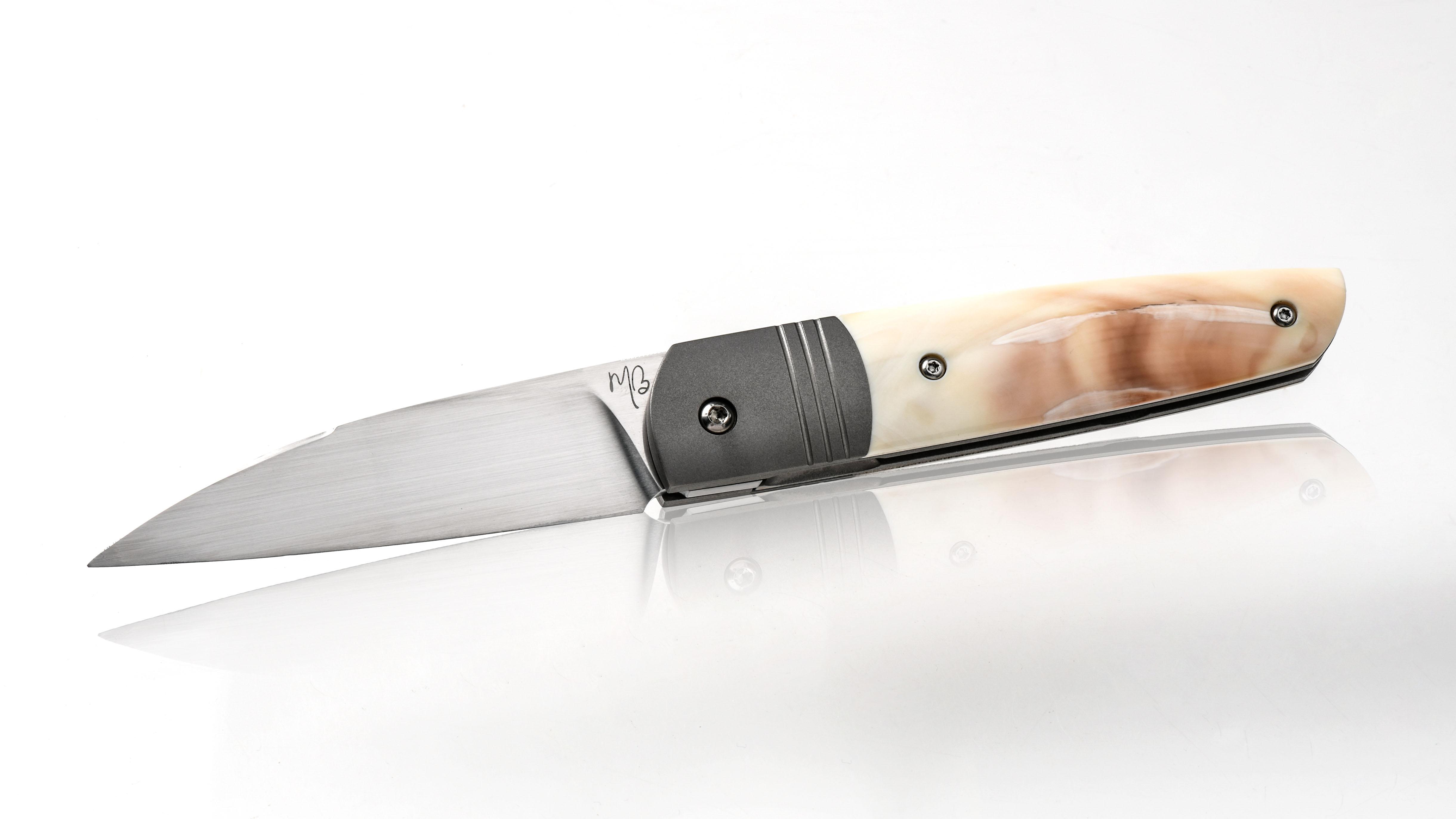
Maxime Belzunce
Discover Warthog tusks
Warthog ivory, from the upper and lower canines of the animal, is highly valued in cutlery for its hardness, resilience, and natural beauty. This material, partly covered by a band of enamel, often exhibits an attractive speckled appearance, making it an aesthetic choice for knife handles. It is important to note that warthog ivory arrives in the form of a tooth and therefore requires additional sawing operation before mounting, shaping, polishing, and cleaning for handle creation.
Mammoth Fossil Ivory
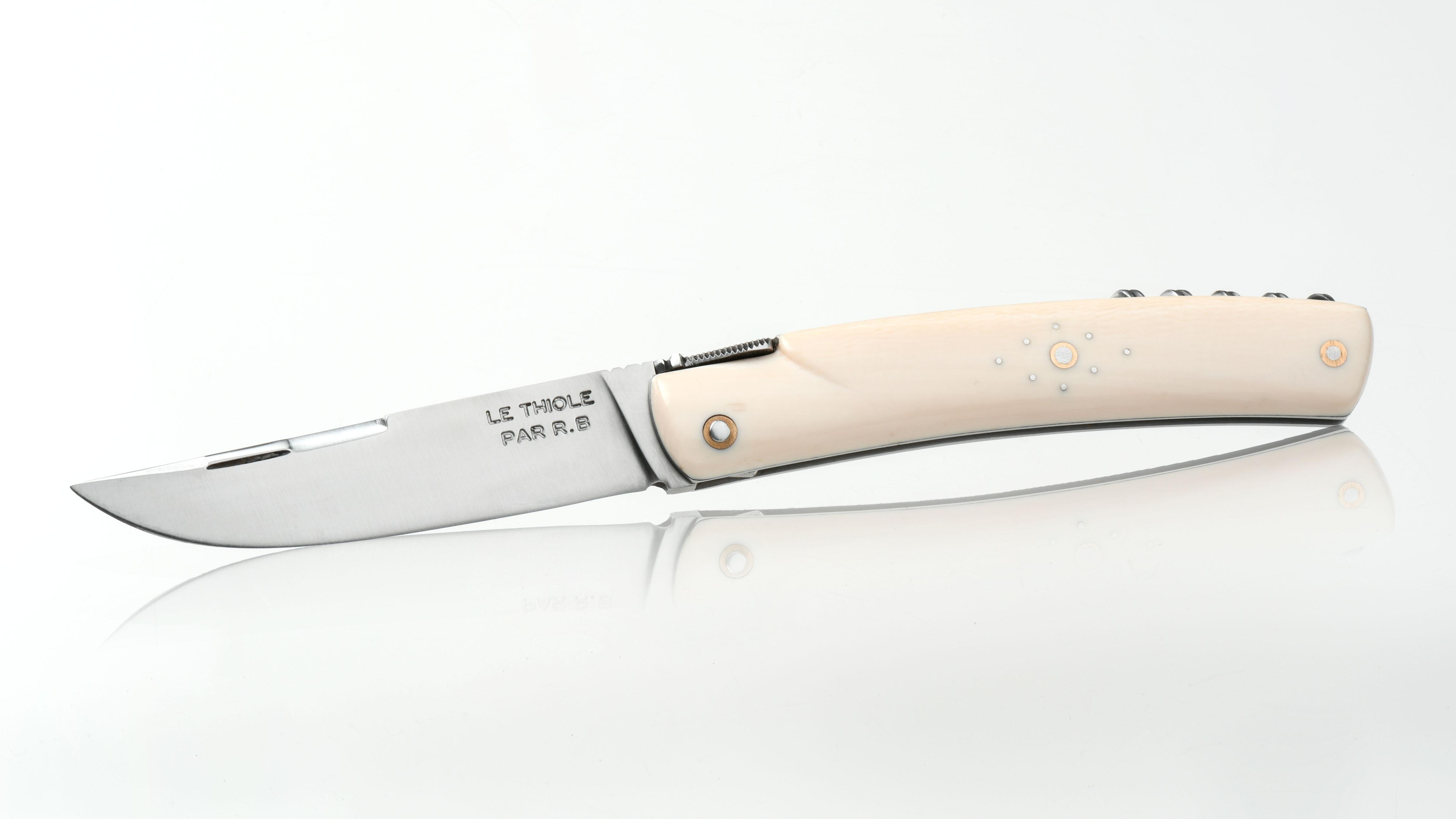
Robert Beillonet
Mammoth ivory, a fascinating and historic material, proves to be an exceptional choice for cutlers seeking uniqueness and quality. Derived from the tusks of mammoths extinct for millennia, this ivory is distinguished by its remarkable durability and ability to withstand the ages without degradation, attesting to its great resilience. Its unique texture and pearly white appearance, adorned with magnificent veins, make each piece of mammoth ivory truly unique. Furthermore, its legality as a fossil material adds to its allure, offering creators the opportunity to work with both historically significant and aesthetically pleasing material.
Discover mammoth ivory
Stabilized Mammoth Ivory Fragments
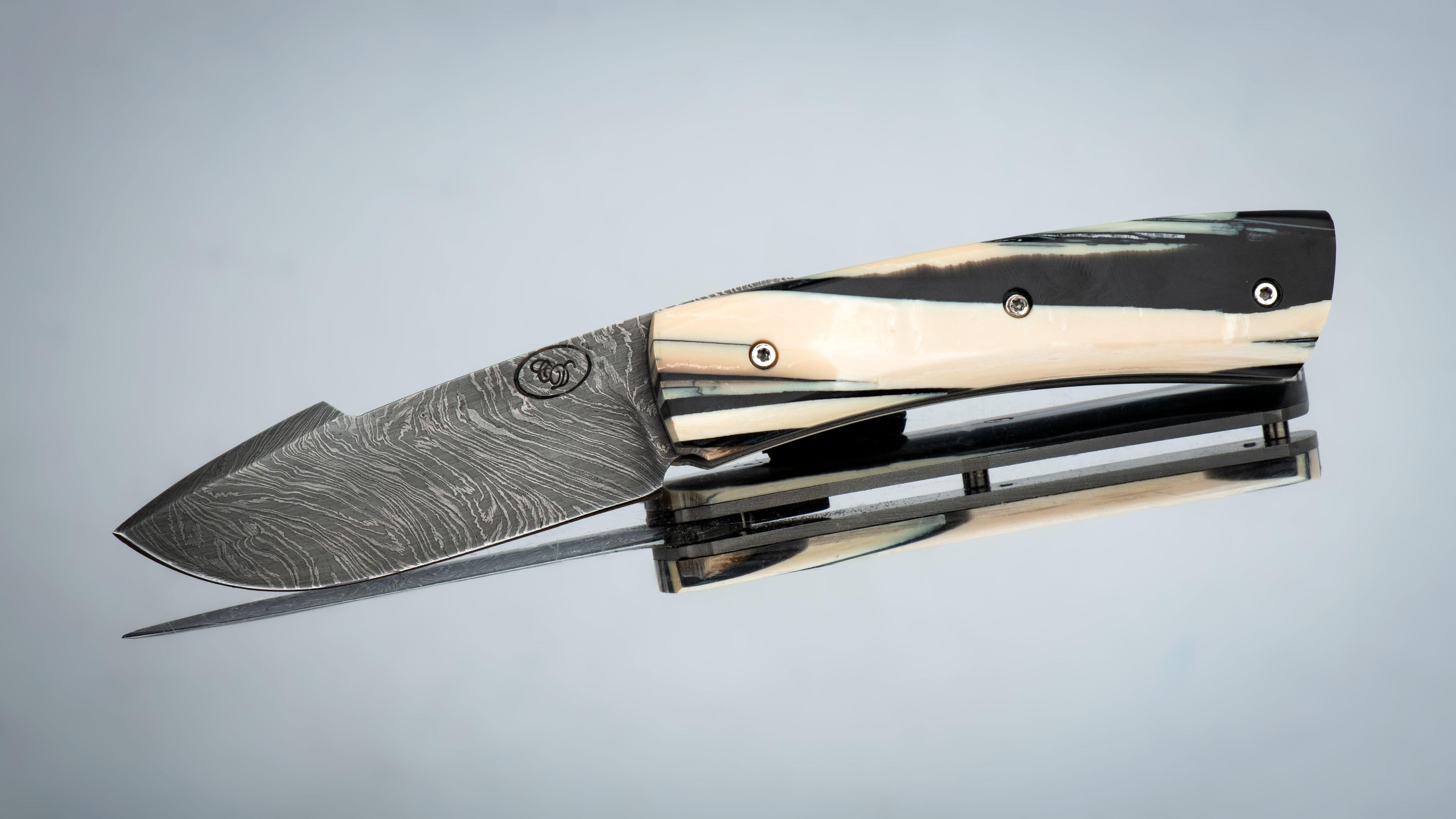
Daniel Cerbera
Mercorne has developed an innovative and environmentally friendly approach to valorize mammoth tusk fragments. On average, the production of a knife handle using mammoth ivory generates 80% of "waste", which previously would have been destroyed. Mercorne, aiming to align its practices with its corporate values, has chosen to give new life to these historically laden pieces by incorporating them into resin. This process creates a unique material, blending tradition and modernity, while also contributing to waste reduction.
Discover mammoth ivory fragment
Elforyn / Synthetic Ivory
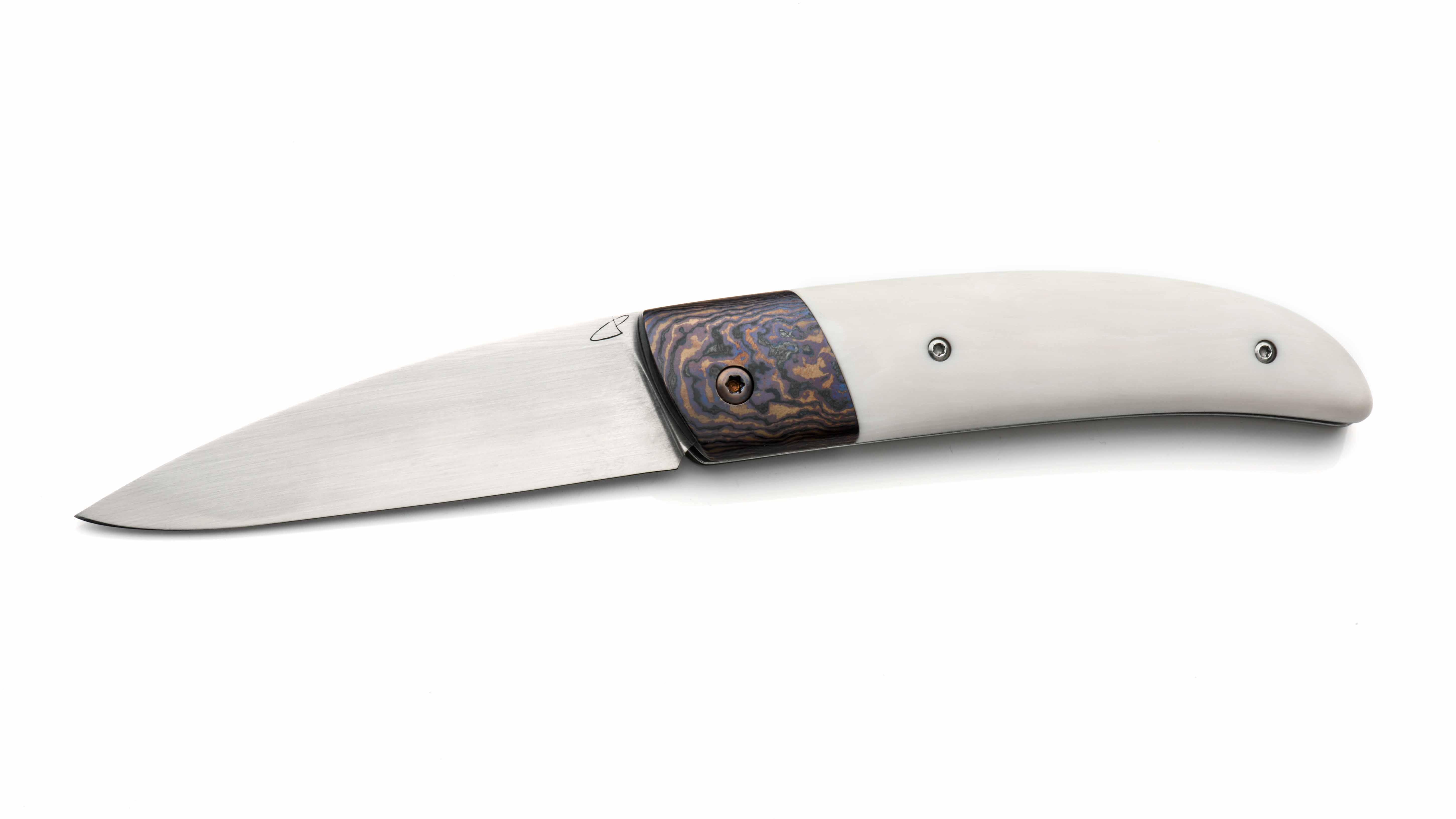
Les couteaux du Mitou
Elforyn is a synthetic material developed in Germany, offering an ethical and sustainable alternative to natural ivory, traditionally obtained from elephant tusks and other animals. It stands out for its striking resemblance to genuine ivory, both in appearance and touch, thanks to realistic veining that mimics that of natural ivory. Made from polyurethane, elforyn exhibits excellent working properties, allowing drilling, milling, grinding, and polishing with minimal risk of breakage due to its homogeneous structural composition. It is also resistant to ordinary substances such as cleaning agents, oils, greases, as well as acids and alkalis, and displays low water absorption. Elforyn can be thermoformed in boiling water and is easy to polish and varnish, offering a pleasant touch due to its good thermal characteristics.
Discover Elforyn
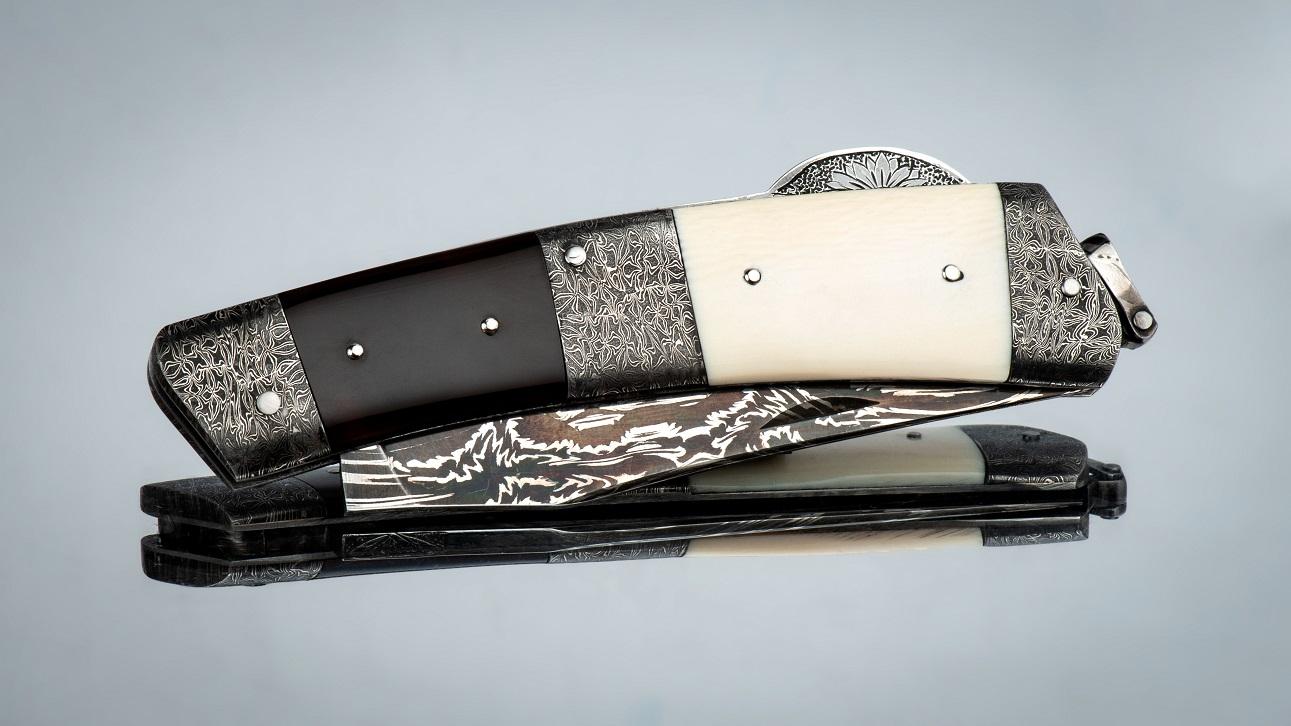
Jean-Pierre Veysseyre
Exploring ivory in cutlery reveals a rich tradition of craftsmanship, marked by innovation and a deep appreciation for the material. Warthog ivory and mammoth fossil ivory, with their uniqueness and durability, along with synthetic substitutes like Elforyn, demonstrate how the industry can evolve while preserving classical beauty. These alternatives enable the continuation of the tradition of luxury cutlery without compromising environmental and ethical values.
In Same Category
- CALCEON – by RAFFIR – Unique beauty forged underwater
- Jamaican Rain Tree (Brya Ebony)
- Everything You Need to Know About Bog-Wood – An Exceptional Material for Artisans
- Seafoam Block: A Unique Material for Crafting and Knife Handles
- The Use of Drill Bits and Taps in Knife Making: Techniques and Advantages

Comments
No comment at this time!
Leave your comment